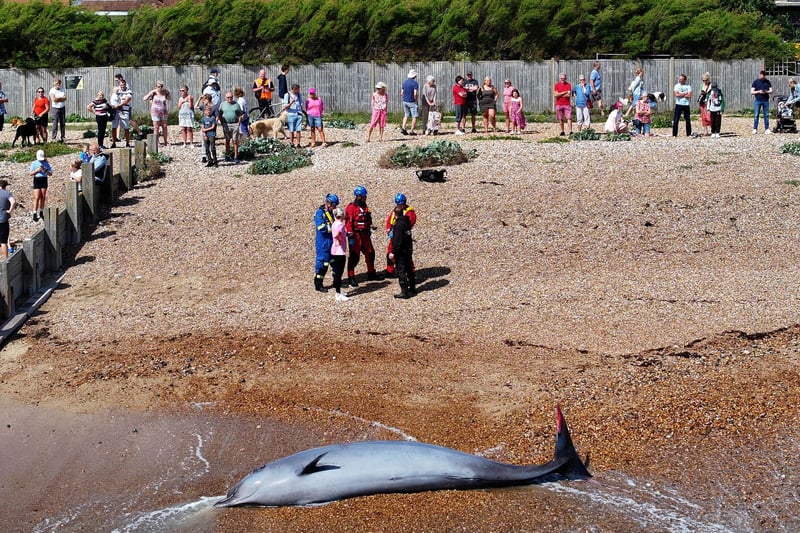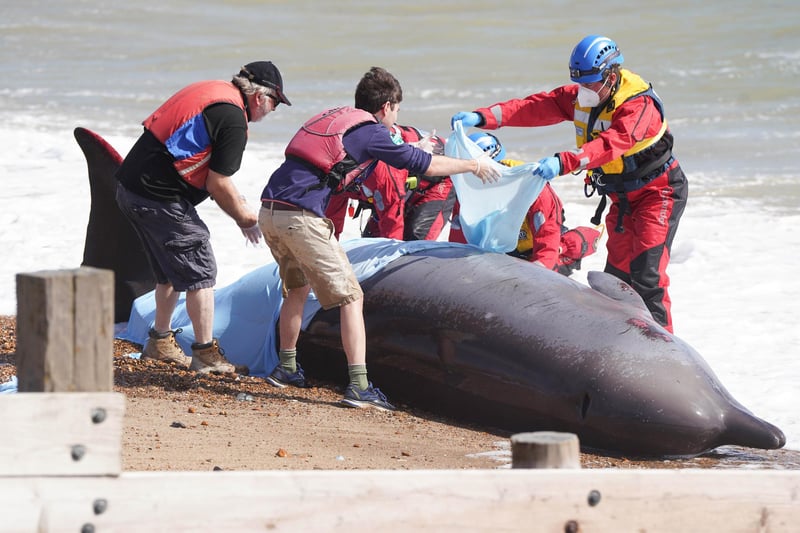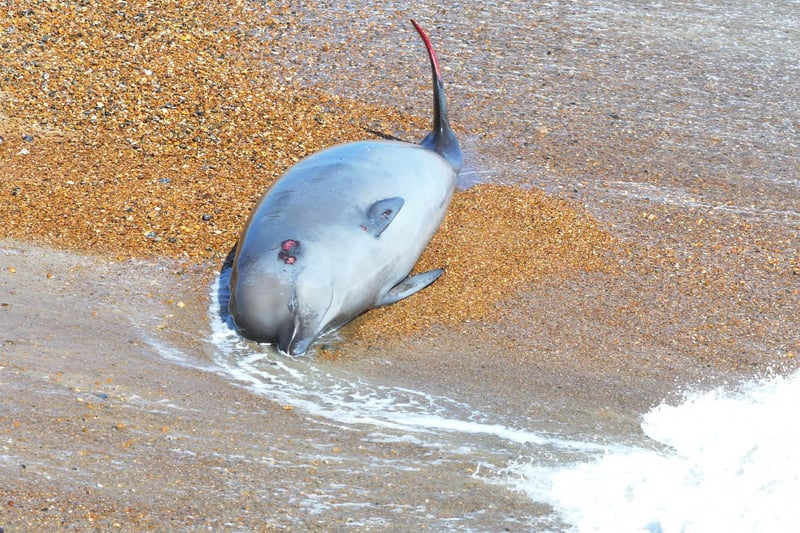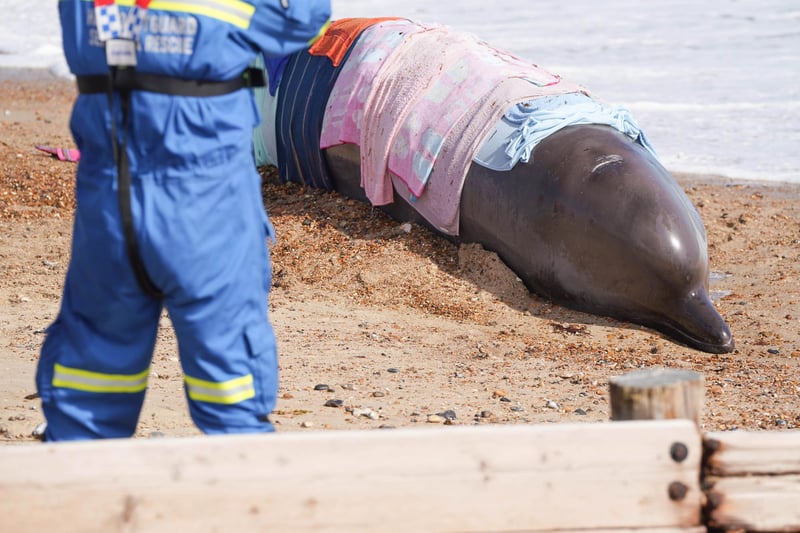A sea mammal washed up on the beach at Rustington on Saturday afternoon (August 19). The alarm was raised at about 1.30pm and the British Divers Marine Life Rescue were swiftly at the scene with the Coastguard Rescue Team from Littlehampton.
Local residents were helping rescuers’ efforts to save the injured whale, which was a young male – reportedly over five meters long and weighed five tonnes.
Arun District Council asked the public to ‘leave the teams to do their job and look after the whale’, who wasn’t ‘in the best of health’, adding: “Please be respectful of this beautiful creature and those caring for it.”
The Coastguard team, which remained at the scene with marine specialists on Sunday morning, confirmed that ‘it was not possible’ to get the whale back into the sea, adding: “Sadly it has now passed away. The council will be attempting to recover the whale this morning.
“We are asking members of the public to stay away and remain behind the cordons. We are also asking dog walkers to ensure they keep their dogs on leads whilst passing the area.”
Unfortunately, not everyone heeded that warning.
Confirming the news that ‘sadly our whale didn't make it’, the council added: “Please don't go near it. It is a bio-hazard.
"It is also a beautiful creature that deserves respect. Talking selfies with it, or even letting your dog urinate against it, is not cool. It will be taken for scientific research so that we may learn.”
In response, Littlehampton councillor Billy Blanchard-Cooper wrote: “I am really sad to learn of the passing of this animal, but even sadder to hear of people’s disrespect."
How did the whale die?
The Maritime and Coastguard Agency said on Sunday that it was ‘not yet clear what caused the whale’s death’.
The British Divers Marine Life Rescue told SussexWorld that ‘it’s likely’ that any injuries ‘would have been as a result of live stranding’.
According to the Irish Whale and Dolphin Group, a live stranding is a living animal that comes ashore and is ‘unable to return to the sea’.
This can be in two forms – single strandings and mass strandings.
"Why cetaceans live strand remains a mystery, and even after investigation it is not always definitively possible to determine the reason behind it,” the group wrote.
"Some causes of live strandings may be due to natural reasons and outside our control, while other causes can be greatly reduced or even eliminated through human actions.”
How common are northern bottlenose whales – and why they can be confused for dolphins
After news broke that a whale had washed up on the beach, some believed the photos they were looking at showed a dolphin.
Experts determined it was a northern bottlenose whale despite one key similarity.
The Hebridean Whale & Dolphin Trust said these whales have a ‘very distinctive bulbous melon (forehead)’ but ‘a dolphin-like beak’.
The Mammal Society explains that northern bottlenose whales are primarily found in waters less than 500m deep and ‘may be associated with submarine canyons’.
A profile on the website added: "Largest British beaked whale, distinguished by other beaked whales by large, bulbous forehead and short dolphin-like beak. Body is long, robust, cylindrical. Colour very variable, from chocolate brown to yellowish brown above, lighter on flanks and belly, irregular patches or blotches; male forehead becomes lighter with age. Newborn calves are grey with dark eye-patches and light heads.”
According to the Whale and Dolphin Conservation, northern bottlenose whales are ‘naturally friendly and inquisitive’ but their ‘gentle disposition’ has been ‘mercilessly exploited by man’ over the years.
They explained: “Targeted by whalers throughout the 19th and 20th centuries, over 65,000 northern bottlenose whales lost their lives. Choosing to stay by the sides of wounded companions, whales were easily picked off one by one. Why? To be used for oil and pet food.”
Northern bottlenose whales, also known as a bottlehead or North Atlantic bottlenose whale, typically are found in the Northern to Mid-Atlantic Ocean and on average live until they're 35 (ITV).
Mainly found in pods of between four and 20 whales, they are known to mostly feed on squid, as well as herring, prawns, and starfish.

1. Whale washes up on beach
A northern bottlenose whale has washed up on the beach at Rustington Photo: Eddie Mitchell

2. Whale washes up on beach
A northern bottlenose whale has washed up on the beach at Rustington Photo: Eddie Mitchell

3. Whale washes up on beach
A northern bottlenose whale has washed up on the beach at Rustington Photo: Eddie Mitchell

4. Whale dies after washing up on beach
Rescue teams tried to save the injured northern bottle nose whale at Rustington beach Photo: Eddie Mitchell